NCLE Field Lab
The goal of the National Centre for Livestock and the Environment (NCLE) is to increase the economic and environmental sustainability of integrated livestock and crop production. This field trial compares the impacts of several types of manure and manure management on annual and mixed annual/perennial cropping systems.
About
The National Centre for Livestock and the Environment (NCLE) is a team of scientists working in multidisciplinary research partnerships to make integrated livestock and crop production systems more sustainable. This includes beef cattle, dairy cattle, pig and poultry production systems and plant production for food, feed, fuel and fibre. The goal is to improve farm productivity, environmental stewardship, human and animal health, and use resources more efficiently in agriculture.
The Long-term Manure and Crop Management Field Laboratory is part of this research and began in 2007. The field lab is on Treaty 1 territory, located 20 km south of Winnipeg. It provides a place to study various management practices to optimize nutrient cycling in integrated livestock and crop systems. Manure usage has a risk of polluting surface and ground waters if not managed well, so long-term study sites are important for developing manure management practices with knowledge that can account for changes over time with different soil types and cropping systems.
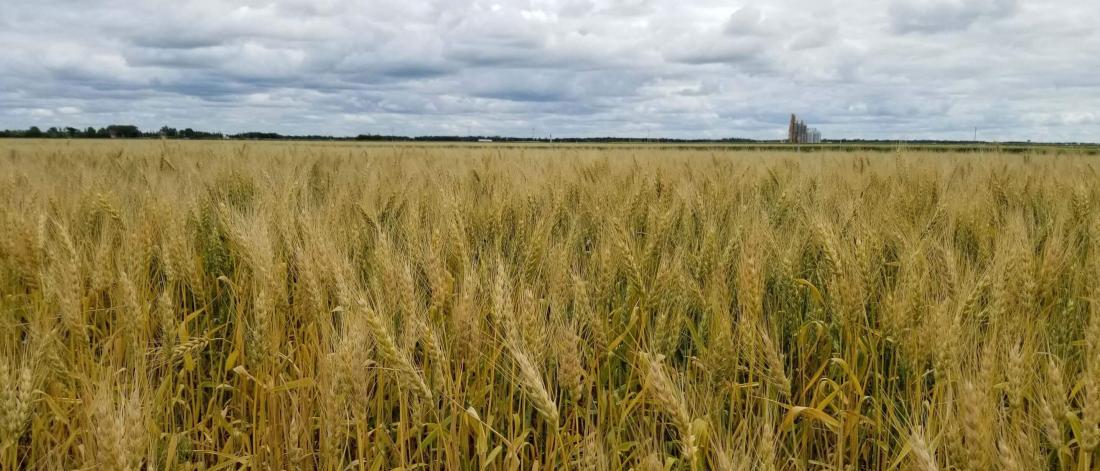
Experimental Design
The design is a split plot factorial with eight experimental blocks that are oriented east-west. The blocks were managed as two cropping systems, half annual and half perennial forage-based. Each block has fourteen 20 m x 20 m plots with a 5 m buffer zone between plots and a 30 m buffer between blocks. The large scale of the plots allows for the use of field scale equipment for all operations. This study can be divided into four phases.
Plot layout 2007-2015
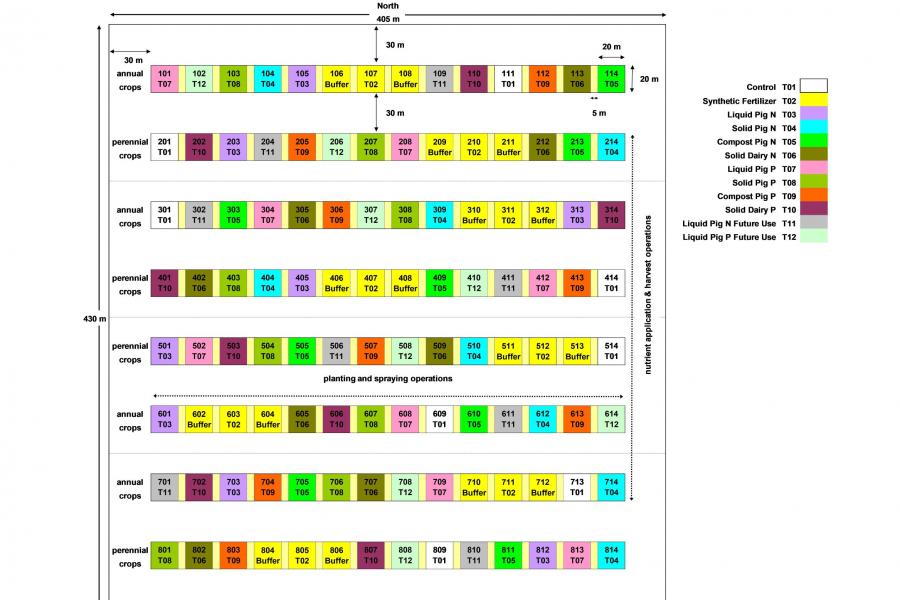
Phase 1: 2007-2015
The initial phase of this study was led by Dr. Don Flaten. The objectives of the study were to determine the availability of nutrients to crops from annual and intermittent application of commercial fertilizer, liquid pig, solid pig, and solid dairy cattle manure. The treatments applied manures at rates to supply adequate P or N to crops.
Phase 2: 2015-2017
Since 2015 the study has been led by Dr. Mario Tenuta. The focus was the effects of long-term manure application on the release of N from soil to crops, the effect on the drawdown of soil test P when no manure was applied for several years, and the availability of N and P from liquid and solid manures that had been applied intermittently.
Phase 3: 2017-2020
The focus continued to be the capacity of manured soil to release plant-available N, P, and other nutrients and the effect on crop yield. In addition to this, measurements of nitrous oxide (N2O) emissions were taken from certain treatments, with the goal of improving our understanding of soil N transformations in generating greenhouse gases from these treatments.
Phase 4: 2020-present
In 2020, the perennial treatments were tilled and put into annual production. All the plots were split east-west and now have a conventional and a soil building treatment. With this new management, we will be able to see if the benefits of perennial crops can be maintained through the “soil building” treatment, which includes implementing no-till, cover crops, etc. Greenhouse gas monitoring will also continue in both treatments.
Current plot layout

Timeline
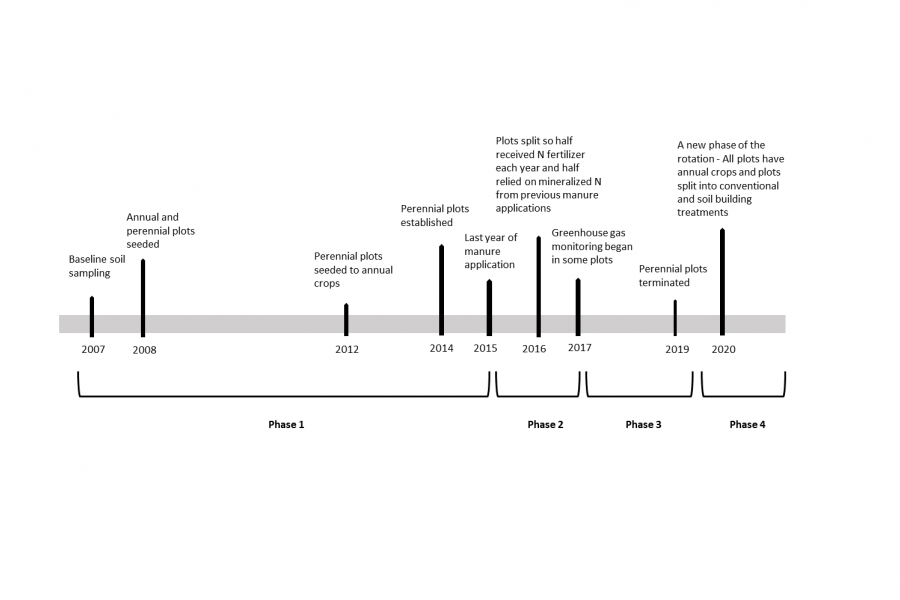
Key Findings
- The nutrient content and availability of manure nutrients vary with the type of manure. Provincial guidelines estimate 25% of organic N becomes available during the first year, but this study found that to be much less, however available N may increase over time, so “stacking” the available N from successive applications may be able to provide a substantial amount of available N.
- The variation in relationships between phosphorus surpluses into changes in Olsen P demonstrates that some manures, like solid dairy manure, likely have more stable P compared to solid pig manure.
- The trend in this study was that soil exchangeable K increased in proportion to the amount of manure K applied, but can be unpredictable in a given year.
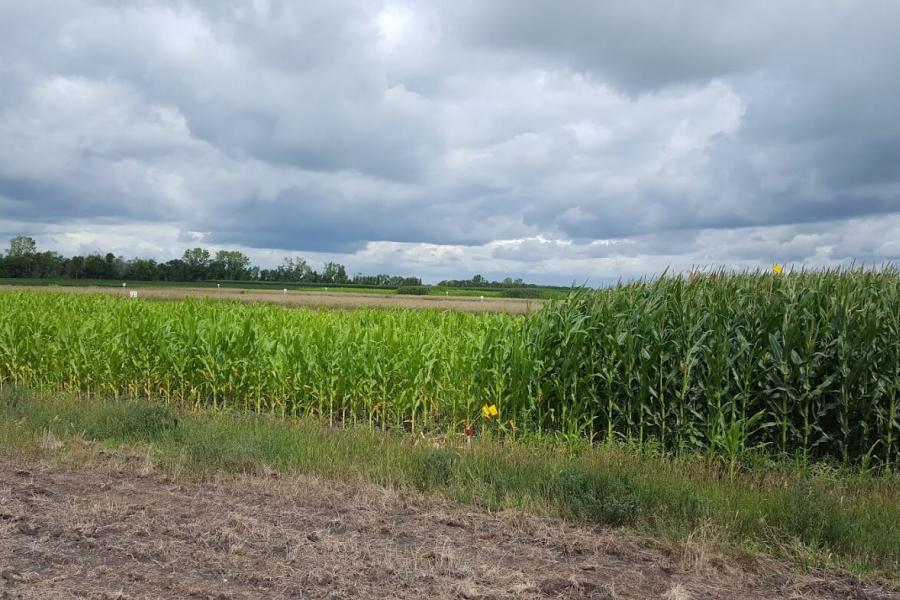
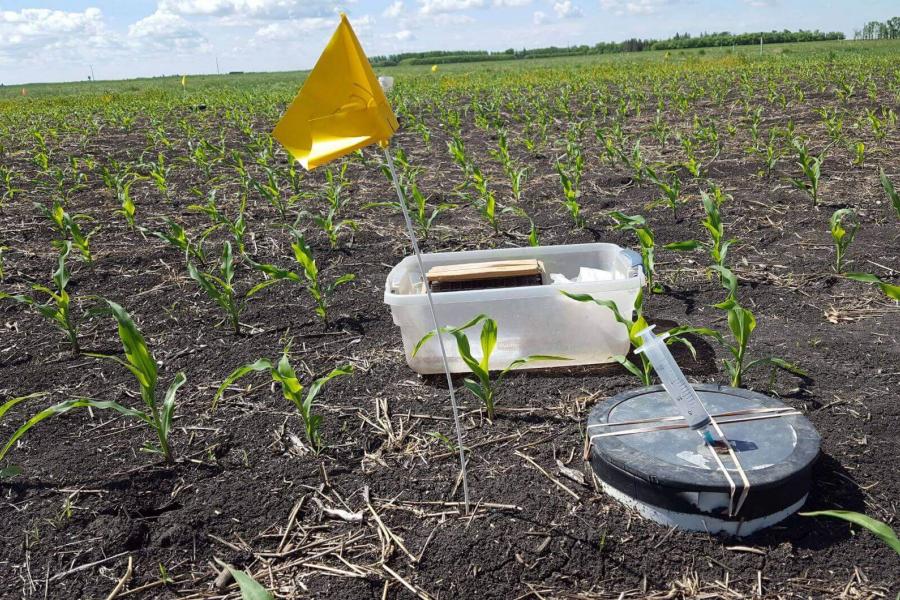
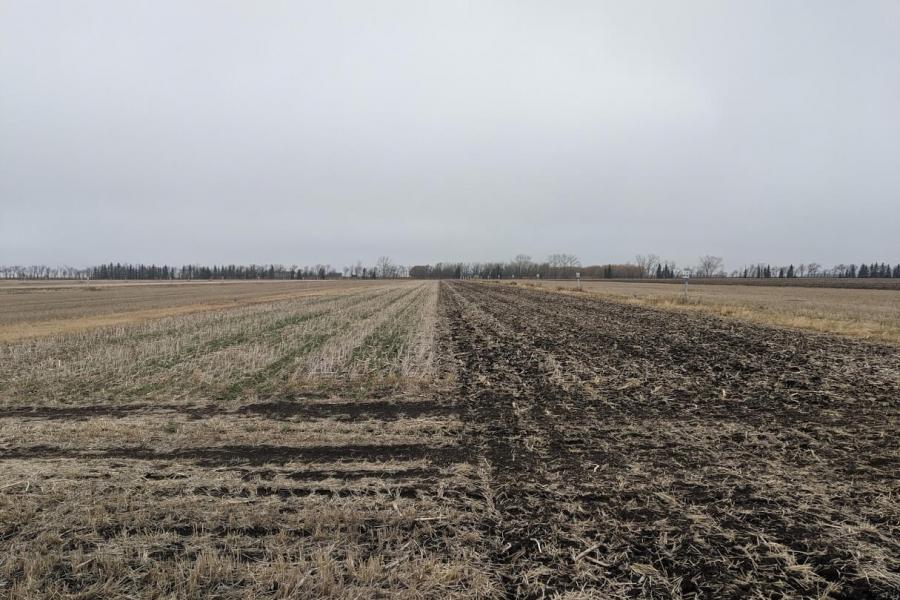
Archived Material
There is a large archive of soil and grain samples, as well as related data, that has been stored every year of the study. Examples include:
- Bulk Density (2008, 2011, 2012 )
- Deep bulk density, typically from synthetically fertilized plots (2011, 2012 )
- Plant biomass - nutrient analysis, samples (2008 - 2019)
- Biomass, dry matter and moisture (2008 - 2019)
- Manure - nutrient analysis (2007 - 2015), samples (2007)
- Soil - nutrient analysis, samples (2007 - 2016)
- Soil stratification samples (2011)
- Soil DNA analysis (2007, 2008, 2010, 2013)
Please contact a NCLE Technician for a complete description of samples and data available in our archive if you are interested in using it for research purposes.
